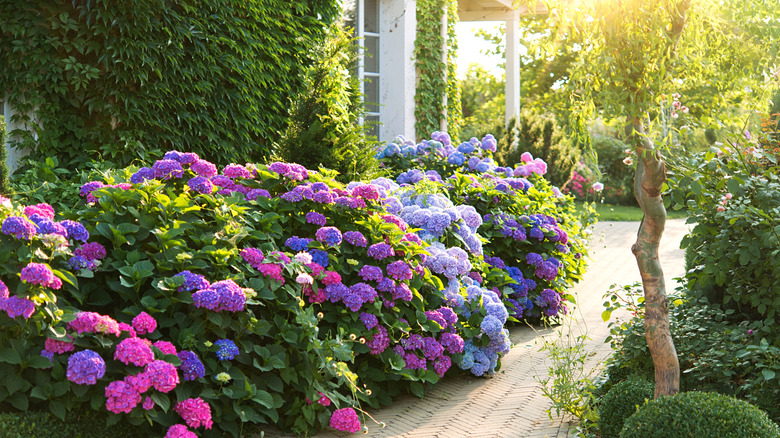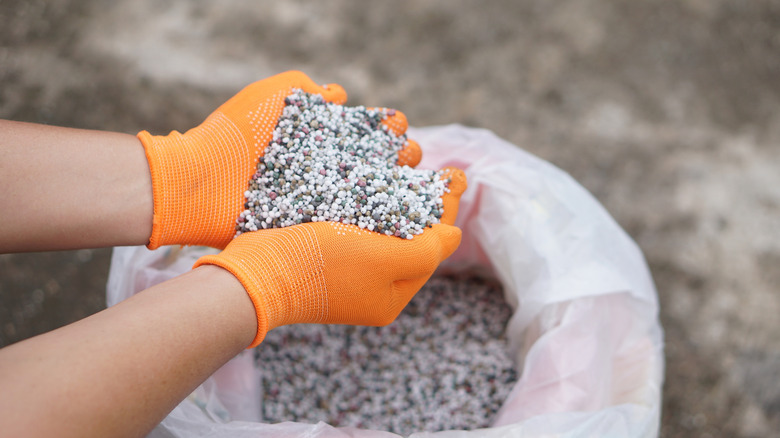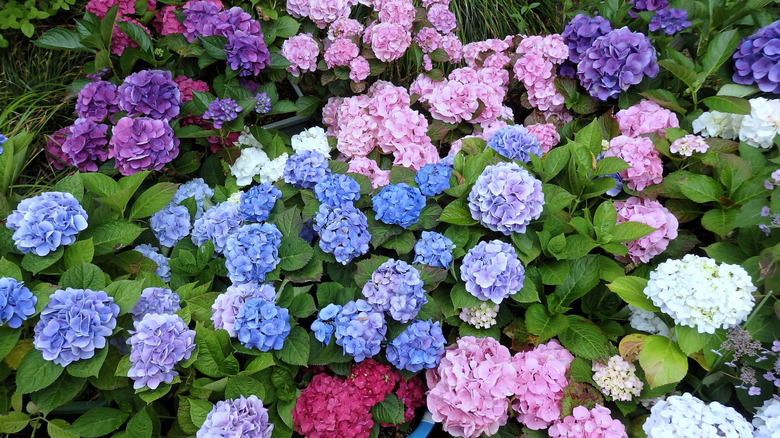When To Fertilize Your Hydrangea Plants (& The Very Best Way To Do It)
With so many beautiful varieties and colors, hydrangeas are a staple plant in many gardens. However, to ensure successful hydrangea blooms every season, it is useful to fertilize them multiple times a year. Fertilizers contain nutrients that feed plants and help with growth, and can be made from organic materials, such as plants and animals, or inorganic materials, such as minerals. However, different plants have different needs when it comes to feed. Hydrangeas are best fertilized in both spring and early fall. When your hydrangea plant is showing signs of new growth in spring, feed it a little to give it extra nutrients for flowering. Then, later on in the year, provide it with more to support its overall health. Avoid giving it too much feed, as this can actually cause the leaves to be more susceptible to frost damage.
If you are growing hydrangeas indoors, it is best to stick with a similar fertilizing routine. Hydrangeas are perennial plants, which means that they naturally have a period of dormancy. By fertilizing your indoor hydrangeas in spring and early fall, you are allowing the plant to rest during the winter months.
The best fertilizers for hydrangea plants
Choosing the perfect flower fertilizer allows you to maintain a beautiful and thriving garden. When it comes to hydrangeas, a general, balanced fertilizer is fine, such as a 10-10-10 N-P-K. Opting for a slow-release fertilizer in spring allows your plants to get their nutrients over time, but you may wish to add a fast-release variety later on in the year. An organic fertilizer is preferable for hydrangeas, as these products contain trace elements, such as calcium and magnesium, which can help the overall health of the soil. If you are looking to increase the size and bloom of your hydrangea flowers, consider picking a feed with a higher phosphorus content, such as a 10-20-10.
When you are feeding your hydrangea plants, place dry fertilizer into the top few inches of the soil around the roots and then water it to allow the nutrients to soak in. Keep an eye on your plants as the seasons go by, and feel free to give them a little dose of feed if their leaves have yellowed during bloom.
How to use fertilizers to change the color of hydrangea flowers
Many varieties of hydrangea are sensitive to the pH levels of soil, and this means that the color of their flowers can change depending on the fertilizer you use. For example, the bigleaf hydrangea (Hydrangea macrophylla) blooms in shades of pink or blue depending on the acidity of the soil. In highly acidic soil, it produces blue flowers, and in less acidic or alkaline soils, it creates a pink bloom. So, if you want your hydrangea to give you blue flowers, use a fertilizer low in phosphorus, such as 12‐4‐8, or try the vinegar trick. To turn your blue hydrangea plants pink, add lime to the soil. Be aware that the flowers won't change straight away, though! It may take a few blooming cycles before your hydrangea flowers are the exact color you want them to be.
Unfortunately, if you have white cultivars of hydrangea plants, they will not change color. You can also get varieties that are genetically bred to be pink, so always research your cultivar before trying this out. If you decide to experiment with the colors of your hydrangeas, ensure that they are happy, healthy, and settled before doing so.


